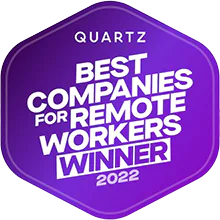Wonolo
Workforce planning is a must for modern organizations that want to maintain a competitive edge. From maintaining cost controls to the ability to adapt readily to shifts in demand, there are a number of benefits to workforce planning for today’s competitive companies. Here’s a look at how workforce planning works, examples, benefits of workforce planning, and everything you need to know to implement workforce planning for your company.

Definition of Workforce Planning
Workforce planning is a systematic organizational process that consists of proactively planning ahead to avoid talent surpluses or shortages. Workforce planning is primarily a Human Resources responsibility, but it also involves input from others within an organization.
How Workforce Planning Works
The idea behind workforce planning is that if a company is able to forecast its talent needs as well as its actual supply of available talent, it will be able to staff itself more efficiently. By ensuring that staffing needs are adequately met, businesses can ensure that there are no excess costs associated with a surplus of talent, nor loss of revenue associated with not having enough staff on hand to complete work.
Workforce planning is a complex blend of various aspects of talent acquisition and management processes. It involved recruiting, retention, leadership, and employee development, and redeployment. Ensuring there is enough of the best-suited talent available for all business needs is the very core of workforce planning.
Examples of Workforce Planning

To understand how workforce planning works, think of a rail company that needs to make repairs to its lines in order to safely operate passenger trains along a corridor. If a company does not have an adequate number of engineers or repair staff on hand to make the repairs promptly, then delays will impact not only their ability to operate the rail line but also the travel plans of the individuals who access the line. This results in a loss of revenue and a poor brand image. This type of detrimental impact can be difficult to recover from, depending on the product or service offered.
There are several components to proper workforce planning, including:
- Forecasting and assessment
- Recruitment
- Contingent workforce
- Leadership development
- Career paths
- Performance management
- Retention planning
- Redeployment
- Potential retirements
- Backfills
- Internal placements
- Metrics
- Identifying job and competency needs
Benefits of Workforce Planning
There are two main pros of workforce planning, the first being that companies can avoid the need for mass layoffs in the case of surplus staffing. This not only saves the company money but can also help prevent negative hits to employee morale. The second biggest benefit of workforce planning is that companies don’t need to scramble to hire if business needs aren’t being met. Given that hiring processes are notoriously long and difficult, this can severely hamper a business’s ability to thrive during boom cycles.
By planning ahead and forecasting future needs with predicted available talent levels, HR departments can ensure that each area of a business has the correct number of staff on hand to meet the business needs. In the case of a surprise turnover, good workforce planning helps ensure there is a qualified individual available to take on that job in as little time as possible.
By being able to forecast and plan for a business’ needs, companies can maintain and ensure their success over the long haul. Simply reacting to events as they happen is not a recipe for success. Preparing and planning for inevitable boom-and-bust business cycles helps management and operations to mitigate any negative impacts on staff and the business.
Ultimately, having lower turnover rates, lower labor costs, and no need for layoffs not only helps the business run smoother and more efficiently, but it also helps keep employee morale and productivity high.
Best Practices for Workforce Planning
Given that talent is crucial for the success of a business, it is imperative to plan and optimize the talent pipeline, as well as talent inventory, in order to prevent shortages or surpluses.
Since all businesses will experience a boom and bust cycle at some point, HR departments should be proactively planning and managing workforce levels. Being prepared for these inevitable cycles will not only help ensure the success of the business, but it will also help the reputation of the HR department.
Developing a formal strategy when it comes to workforce planning is important for ensuring its success. All members of the HR department should sit down and be involved in its planning, as well as maintain regular meetings for updates to the plans. If everyone knows and understands the plan clearly, then it can be executed to its peak potential in order to ensure maximum success.
Planning for employee development and retention can help ensure there is a pool of internal candidates available immediately to handle important business practices, should a sudden or unexpected staffing change occur.
If parts of a business are outsourced, there is often little direct control over workforce planning. Some companies may prefer to keep all functions internal for that reason.
Keeping an eye on the bigger picture and planning for the future is ultimately the goal and priority of good workforce planning. Ensuring that a workforce is aligned with the business goals allows businesses to determine how best to stay on track and re-calibrate as required.






